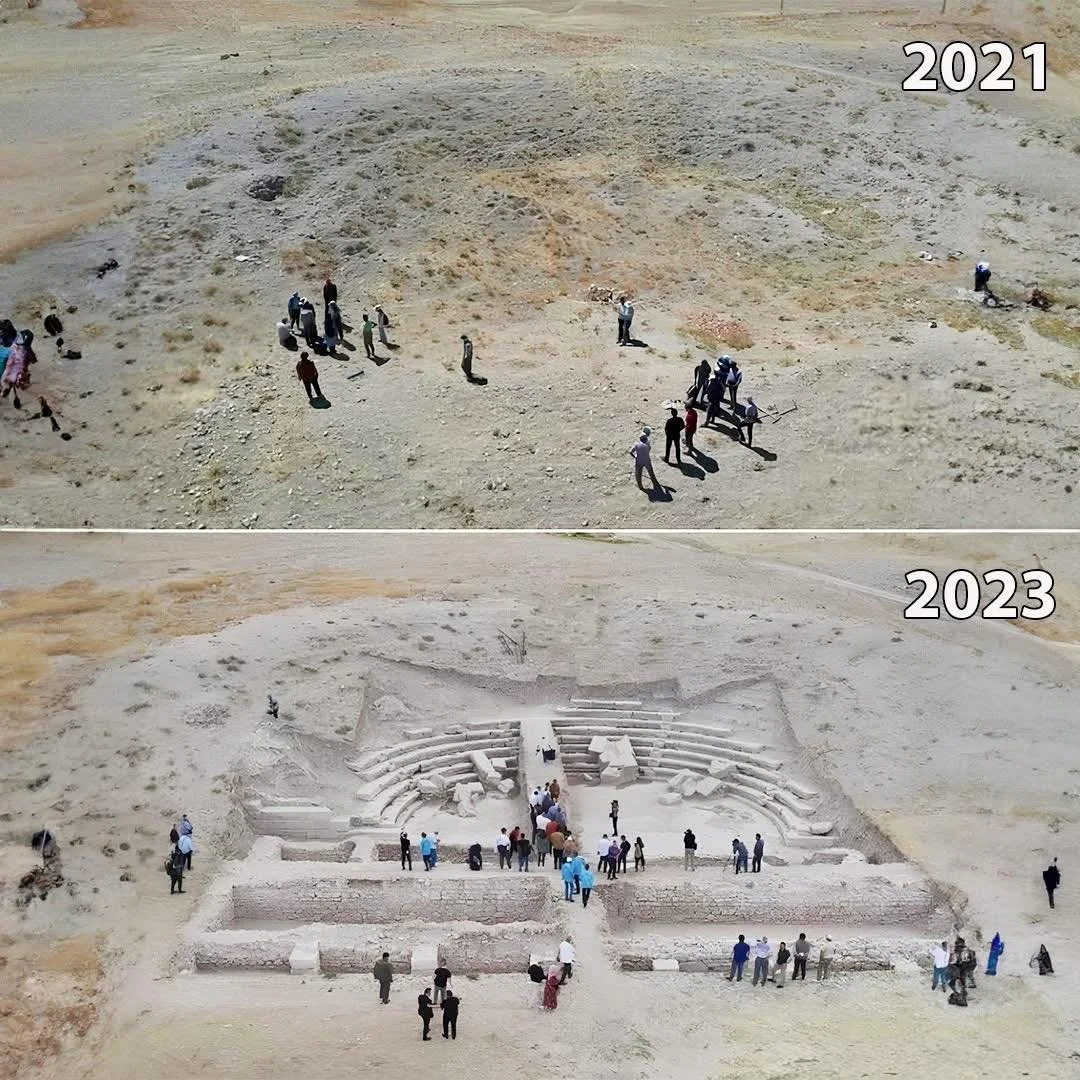The discovery of an intact altar within the Roman theater of Savatra, located in central Anatolia, represents a significant addition to the corpus of material culture documenting the civic and religious life of Roman provincial settlements. Excavated in May 2025, the altar—remarkably preserved beneath collapsed masonry—dates to approximately the mid-2nd to early 3rd century CE. Its Greek inscription, associating the monument with the Aurelia dynasty, and its iconographic program depicting martial and religious motifs, illuminate both the political identity and cultural exchanges that characterized Savatra during the High Empire.
The Context of Discovery
The altar was recovered from beneath the theater’s collapsed superstructure, a circumstance that inadvertently safeguarded it from later spoliation or weathering. The context is significant: theaters in Roman Anatolia functioned not only as venues for performance but also as civic spaces where local elites displayed benefactions, imperial loyalty, and religious devotion. The placement of the altar within such a structure suggests a close interrelationship between entertainment, civic ritual, and public cult.
Epigraphic Evidence and the Aurelia Dynasty
The altar bears a Greek inscription naming members of the Aurelia dynasty, a family of local prominence. The use of Greek, rather than Latin, is consistent with the linguistic realities of the eastern provinces, where Hellenistic cultural traditions persisted under Roman political authority. Such inscriptions demonstrate the dual identity of local elites, who simultaneously projected Roman civic loyalty and continuity with the Hellenic heritage of Anatolia. The Aurelia inscription therefore provides evidence for strategies of self-representation within the civic aristocracy of Savatra, aligning local prestige with imperial structures.
Iconography: Military and Religious Convergence
The sculpted reliefs of the altar depict a soldier bearing a military standard and a victory wreath. These images can be read as affirmations of Rome’s martial authority and its divine sanction. The standard functions as a visual emblem of imperial military organization, while the wreath signifies victory consecrated by divine favor. Together, these motifs articulate the symbiosis of military and religious spheres, illustrating how civic identity in Savatra was embedded within the broader ideological framework of the Roman Empire. The altar thus embodies the dual obligations of local communities: fidelity to Rome’s military order and participation in the sacral discourse of victory and divine approval.
Savatra as a Provincial and Military Settlement
The evidence corroborates Savatra’s role as a Roman outpost along the empire’s central Anatolian frontier. Situated within the provincial landscape of Galatia or Lycaonia (depending on shifting administrative boundaries), the city combined military utility with cultural hybridity. The discovery of the altar underscores the permeability of cultural borders: local elites integrated Hellenistic linguistic traditions with Roman political and religious symbolism, thereby positioning Savatra as both a regional community and an integral node within imperial structures.
Conservation and Future Research
Plans for the restoration of both the altar and the theater are currently in progress. Conservation will not only secure the physical preservation of the monument but also enable detailed study of its epigraphic and iconographic features. Future scholarship may situate the altar within comparative frameworks, examining parallels in other Anatolian theaters where benefactions, dedications, and altars likewise articulated civic and imperial identities. The Savatra altar promises to become a key reference point in discussions of cultural interaction, military ideology, and the role of civic architecture in the Roman East.
The intact altar from the theater of Savatra constitutes an exceptional case study of how provincial communities in Roman Anatolia negotiated identity at the intersection of local tradition and imperial ideology. Through its Greek inscription and martial iconography, the monument demonstrates the coexistence of Hellenistic cultural continuity and Roman military-religious symbolism. As such, it enriches our understanding of Savatra’s civic and cultural landscape, highlighting the city’s significance as a site of cultural synthesis in the eastern Mediterranean world.







